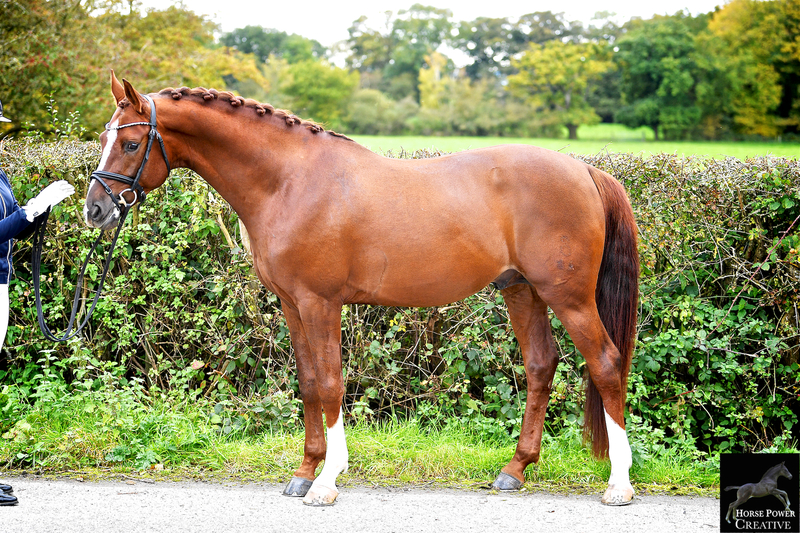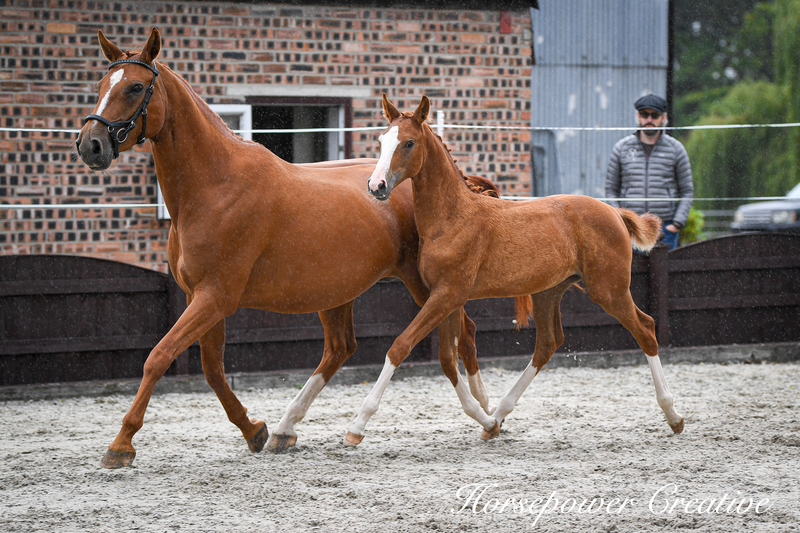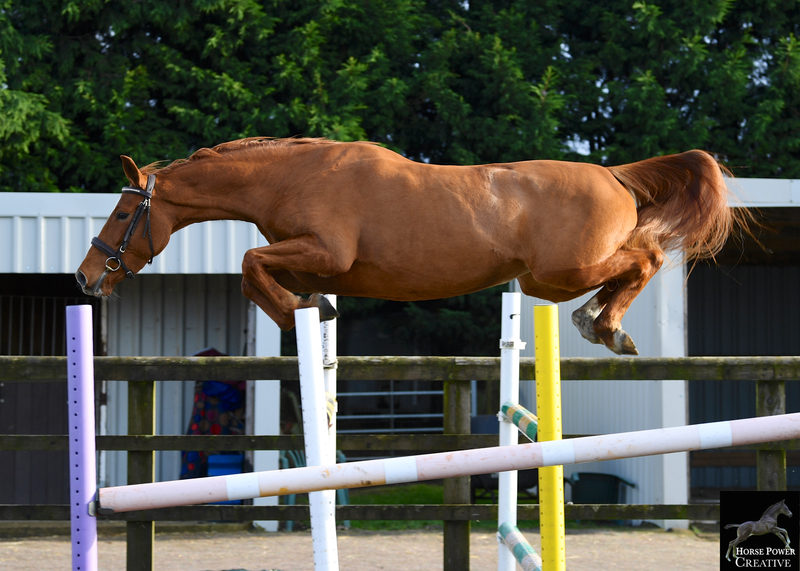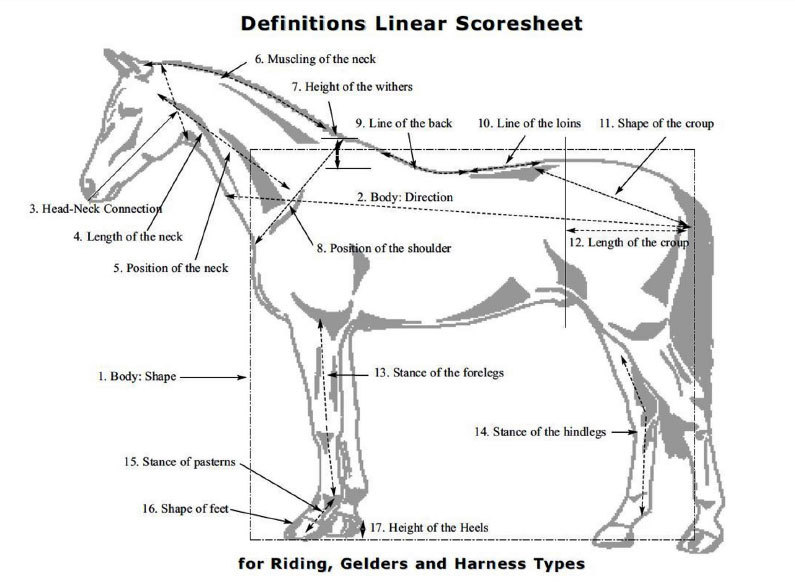We are proud to have developed a detailed and informative linear evaluation system for mares and youngstock based on years of industry experience and international cooperation. The purpose of this is to give our breeders useful feedback and advice that will enable them to make refined and informed breeding decisions, and to give them the recognition they deserve for their great achievements. It also gives us very useful data, as we will be able to see what traits particular stallions (and let us not forget the mares!) are likely to pass on to their offspring.
Alongside the evaluation system we have developed our public database to display each profile on the horse’s databse entry, turning it into a highly valuable research resource and providing maximum transparency.
1. What happens at the evaluation?
Every evaluation, be it a stallion, a mare, a young horse or a foal, consists of a number of steps that allow us to give you a detailed profile of your animal:
1.1 The assessment on hard ground
First of all, we will need to see every horse on hard ground. This is because this allows us to look at details such as feed and soundness that could be more difficult to see on a soft surface. Correctness and soundness are the cornerstones of our studbook’s mission to promote the breeding of successful and happy athletes!

1.1.1 Limbs
You will be asked to stand your horse up side on for the evaluators to see. Please do not be alarmed when the evaluators start to walk around the horse. This is because we will look at all the angles of the legs from side on, as well as from the front and from behind. Occasionally we will ask you to move the horse forward or backward a step. The evaluators will check the angles of the limbs, as well as the symmetry between left and right. These are important indicators for soundness and the ability of the horse to function as an athlete.
1.1.2 Conformation
When we have finished looking at the limbs, we will score the top line of the horse, from the head all the way back to the tail. (Sometimes this step is carried out later on the soft ground, but the principles remain the same). What we are looking for is a horse in a harmonious shape with everything in the right place to make him or her a pleasure to ride and able to succeed.
1.1.3 Correctness in Walk and Trot
You will then be asked to walk the horse away from the evaluators in a straight line and back towards them, and repeat the same in the trot. Sometimes the evaluators may ask you to repeat this. Please do not be alarmed if this happens, sometimes horses spook or tense up, and the evaluators will simply want to give your horse the best opportunity to be seen. At this stage, the evaluators will pay particular attention to how your horse places his or her feet. Front and back feet are look at separately. Where we want the front feet to be completely straight (not toe in, nor toe out), the hind feet ought to be placed every so slightly toe out to encourage straight movement and good use of the hind legs.
1.1.4 Management
The evaluators will note that some things they see are possible to address with management. For example, foot balance and weight management can have a big impact on correctness. We therefore like to give constructive and useful feedback where we feel it can help to improve the horse’s prospect in the sport, as well as giving recognition where we see a well-managed horse.

1.2 The assessment of the movement
The evaluators will then ask you to proceed to the soft surface to show the movement of your horse. The exact format of this assessment will vary a little bit depending on age of the horse and circumstances. What is important to us is that each horse is giving the best opportunity to show themselves off. This is why we never rush this part of the assessment and will allow different formats that are appropriate to each horse. These can be a mixture of in hand and loose movement in the arena for broodmares and youngstock, movement on the lunge for youngstock, and movement under saddle for older ridden horses. When you book your grading with us, we can discuss which format would suit your horse best, and how you can prepare for it. If you present your horse under saddle, please do not be alarmed if the evaluators ask you to carry out a specific movement (for example extend the canter on the long side or across the diagonal). This is not because they want to judge your riding, but because they will want see each gait in collection, as well as extension (as appropriate for the age of the horse) and will want to assess crucial aspects, such as balance and elasticity.
Seeing the horse move can give us some more interesting information for the conformation assessment, too, so the evaluators will sometimes return to the conformation profile to note their observations from this second stage of the assessment.
1.2.1 Walk
Quite often, the evaluators will look at the walk last, as many horses walk better once they had a chance to loosen up in trot and canter. So please don’t worry if we ask you to repeat the walk towards the end of your assessment. Everything we ask you to do we do not to try and find fault, but to give your horse the best opportunity to show what they are able to do.
In the walk, we look for an active and engaged movement with a correct rhythm and a loose topline. We like to see the horse use its entire body and take long, confident steps with a lot of reach from the shoulder and a good overstep from behind. Our ideal walk would be longer than average, but not at the complete extreme, as we do recognise the importance not only to extend, but also to collect the walk in ridden work. We like to see a walk where the front end waits of the back end to step under, and we like to see an elastic topline.
1.2.2 Trot
The evaluators will ask you to show the horse in trot. We will never look at a trot just in hand, but instead will allow broodmares and unridden horses to move loose and/or – if appropriate – on the lunge. What is important to us is that the movement is confident and purposeful, not forced and not restricted, to allow us to see a horse’s natural inclination. The trot will be assessed on criteria such as elasticity, length of stride, balance and impulsion. We like to see a trot that covers the ground, with good freedom in the shoulder, but also correctness and movement that comes from behind with active hocks and power.
1.2.3 Canter
We think the canter is a very important gait, in will therefore never carry out a full mare or youngstock grading without it. The format and criteria are similar to the trot assessment. We like to see a powerful canter with the ability to lengthen and shorten the stride and a good natural balance.

1.2.4 Jump (if appropriate)
Jumping horses can be assessed over jumps if this is appropriate. This can be either under saddle or over a loose jumping lane for younger horses. This option is available from the age of 2 ½. Foals, yearlings or pregnant mares will not be assessed in the jump.
The height of the fences will be varied according to each horse’s needs. We are looking for a keen and confident attitude towards the fence, a quick take off, good bend in the front legs and open hocks. Please do not worry if your horse has a pole down, it can be very useful to see how a horse deals with having made a mistake and whether they are able to learn from it. We do not condone an over-produced jump, but are looking for natural inclination and ability.

2. What do the linear scores mean?
As your horse progresses through the different stages of the assessment, the evaluators are noting down their observations in a linear score format. Each section contains a number of different aspects. For example, for your walk score you will receive feedback on a range of criteria, including length of stride, freedom of shoulder, elasticity, rhythm, and engagement. All scores are noted against a middle line of average. For example, your horse’s length of stride might be longer than average, in which case the evaluator will note this with a tick towards the left of the sheet from the average line towards “long”. If the evaluators feel your horse’s stride is shorter than average, they will go towards the right of the average line towards “short”. How far to the left or to the right depends on how much longer or shorter than average the movement is.
This first of all gives you an objective description of your horse, but it does not tell you yet whether this is a good thing, or whether this is an aspect you would wish to improve on in future.
Because different disciplines require different movement and conformation traits, we have developed different “ideal” profiles for each. For example, in a dressage horse an very uphill conformation is desirable, in a jumper you may want to see a more horizontal shape. To help you with the interpretation of your score, we have colour coded our profiles (with green for things that are excellent, yellow for things that are ok, and red for things that could give you problems). Please note these are a guidance only and will be subject to change over time, as the requirements of the sport and our understanding will continue to evolve.
3. What do the number scores mean?
Linked to these profiles, you will then also receive a numerical score. Roughly, the more ticks you have in the green areas of the score sheet, the higher your score will be. The score represents the judge’s opinion about the quality of your horse, based on their observations.
Numerical scores are given on a scale of 1-10, and can most easily be compared, for example, to scores given in a dressage test.
Any score of 6 and above represents the judge’s opinion that the horse is of suitable quality for the studbook.
A score of 7 and above represents a good to very good mark. 8 and above is excellent, with 9 and above outstanding.
You will receive a numerical score for each aspect of the assessment. Please note that the score for correctness is made up of two elements, one for how the horse looks now, and one to represent the potential of the horse.
It is important to remember that the scores are a reflection of how the horse presents himself or herself on the day. Especially youngsters can change a lot over time!
4. What do the stars mean?
The studbook has a 5 star system, which operates across all types of horses. The first 3 stars are awarded for presentation in hand, the 4 and 5 stars are awarded for performance in competition and ridden achievements.
1* - this horse is of sufficient quality – this level is awarded for horses scoring 6.0-6.99 in their grading evaluation. For broodmares this means they are good enough for the main studbook. Horses awarded with 1* will usually make good riding horses at amateur level, with mostly average and in some aspects below average movement. There will be room for improvement in certain aspects. Our judges are always happy to discuss these with you, so do not hesitate to ask!
2** - this horse is of good to very good quality – this level is awarded for horses scoring 7.0 – 7.99 in their grading evaluation. For broodmares this means that they are good enough for the main studbook. For colts, this level means they are potentially good enough to gain registered level as a stallion (see our separate stallion gradings section). Horses awarded 2** level will usually make very good horses for anybody with competition ambitions at national level with movement that will be above average in some respects. There will be some room for improvement, still, and you might find it useful to talk to our judges about these aspects.
3*** - this horse is of excellent quality – this level is awarded for horses scoring 8.0 and above in their grading evaluation. For broodmares this means that they are good enough for the main studbook. For colts, this level means they are potentially good enough to gain licensed level as a stallion (see our separate stallion gradings section). Horses awarded 3*** level usually have the talent to succeed nationally as well as internationally.
4**** - this horse has proven himself or herself under saddle – this level is awarded to horses not on the basis of their evaluation score, but on the basis of performance at national level. Candidates for 4**** level (mares, as well as stallions) are invited to be presented to the team of evaluators under saddle.
5***** - this is the highest level awarded to AES mares and stallions. It is awarded on the basis of Grand Prix performance at national and international level and represents the ultimate aim for all breeders and owners.
5. How do I book a grading?
We offer a range of opportunities to present your horses for grading. We carry out two stallion grading tours every year, in the spring and in the autumn, at a range of venues across the country. We also carry out youngstock and mare grading tours throughout the summer. You can either come to one of our public venues, or book a home visit. To get in touch and find out more, email eva@angloeuropeanstudbook.co.uk.





